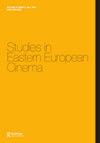“Das ist Walter”:南斯拉夫战争电影中以维里米尔·巴塔为代表的原型英雄形象的演变Živojinović
IF 0.4
0 FILM, RADIO, TELEVISION
引用次数: 0
摘要
Velimir Bata Živojinović拥有350部电影作品,从古典南斯拉夫电影到新电影到当代塞尔维亚电影,从历史史诗到黑色电影,从家庭喜剧到激进前卫电影。他是一位传奇演员,也是南斯拉夫电影界最重要的人物之一,他作为《游击队》电影的原型英雄而被人们铭记。本研究考察了Živojinović的大众形象是如何通过战争电影的类型和南斯拉夫特色的游击队电影品牌来建构的。通过将Živojinović的明星形象置于其作品的背景下,定义党派美学,并仔细分析演员职业生涯中的三个不同时期,以及在发展他作为原型英雄形象方面发挥核心作用的电影,即Kozara (Veljko bulajiki 1962), Valter brani Sarajevo/Walter defessarajevo (Hajrudin Krvavac 1972)和Lepa sela lepo gore/美丽的村庄,美丽的火焰(Srđan dragojeviki 1996),我展示了维里米尔·巴塔Živojinović所体现的坚不可摧的党派形象是如何在银幕上的电影空间中建立起来的,以及这个形象是如何在电影中继续发展、转变和演变的,最后,通过银幕外的公共空间。本文章由计算机程序翻译,如有差异,请以英文原文为准。
“Das ist Walter”: The Evolving Figure of the Archetypal Hero Embodied by Velimir Bata Živojinović in the Yugoslav War Film
Abstract Velimir Bata Živojinović boasts a body of work which traverses 350 motion pictures from Classical Yugoslav Cinema over The New Film to Contemporary Serbian Cinema, historical epic to film noir, family comedy to radical avant-garde. A legendary actor and one of the most significant personalities of Yugoslav cinema, he is best remembered as the archetypal hero of the Partisan film. This research examines the ways in which Živojinović’s popular figure was constructed through the genre of the war film and the brand of Partisan film distinct to Yugoslavia. By situating Živojinović’s star image in the context of his oeuvre, defining Partisan aesthetics and closely analysing three different periods in the actor’s career, with respect to the films which are central in developing his image as the archetypal hero, namely Kozara (Veljko Bulajić 1962), Valter brani Sarajevo/Walter Defends Sarajevo (Hajrudin Krvavac 1972), and Lepa sela lepo gore/Pretty Village, Pretty Flame (Srđan Dragojević 1996), I demonstrate how the indestructible partisan figure embodied by Velimir Bata Živojinović was established in on-screen cinematic space, and how this figure continued to develop, transform, and evolve across films, and, finally, through off-screen public space.
求助全文
通过发布文献求助,成功后即可免费获取论文全文。
去求助
来源期刊

Studies in Eastern European Cinema
Arts and Humanities-Visual Arts and Performing Arts
CiteScore
0.50
自引率
0.00%
发文量
34
 求助内容:
求助内容: 应助结果提醒方式:
应助结果提醒方式:


